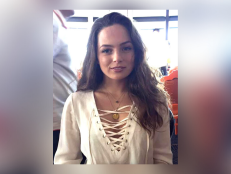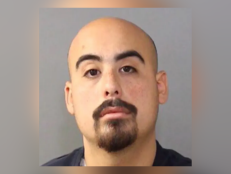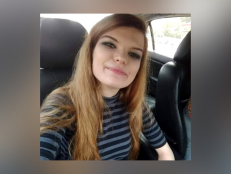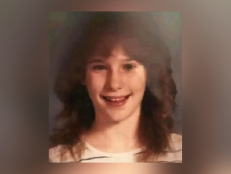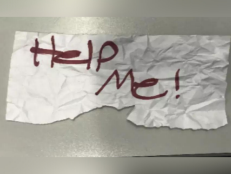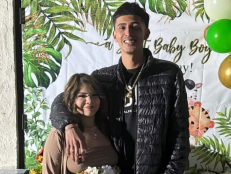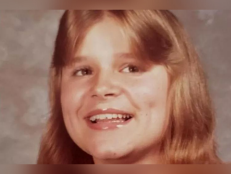5 Questions The Gabby Petito Case Brought Up About Domestic Violence
The murder of 22-year-old Gabby Petito at the hands of her boyfriend, Brian Laundrie, sparked a national conversation about the signs of domestic abuse.

Chris O'Meara via AP
On Sept. 11, 2021, Gabby Petito, 22, was reported missing by family and her case quickly gained national attention. She had been living in a van and traveling with her fiancé, Brian Laundrie, and was near Grand Teton National Park in Jackson, Wyoming in late August when she last spoke to family on the phone.
During the investigation into her disappearance, bodycam footage was released to the public from an incident on Aug. 12, 2021. A witness had called police on the couple, claiming he saw Laundrie slapping Petito. In the footage, Petito, who looks visibly upset, admits to striking Laundrie, while Laundrie admits to pushing his fiancée. The police classified the incident as "disorderly conduct."
Laundrie, who returned to his Florida home alone on Sept. 1, did not cooperate during the police investigation. On Sept. 21, 2021, Petito’s body was found in Teton County and on Oct. 12, 2021, her cause of death was determined to be strangulation.
Laundrie was nowhere to be found until Oct. 20, 2021, when officers found his remains. He died by suicide from a gunshot wound to the head.
This case received national attention and brought up important questions about the crisis of domestic violence.
Why do some cases get more attention than others?
Gabby Petito’s case sparked a national conversation about the disproportionate rate of media coverage for cases about missing and murdered white women versus women of color. In a 2016 study conducted by Zach Sommers, a sociologist at Northwestern University, he found that while white women and girls made up about one third of the missing persons in the news, their plight received nearly half of the coverage of all news dedicated to missing persons.
This phenomenon was coined “Missing White Woman Syndrome” by news anchor Gwen Ifill. It’s the idea that the media dedicates a disproportionate amount of coverage to upper and middle-class white women and girls who have gone missing.
According to the National Coalition Against Domestic Violence, in 2017, for female victim/male offender homicides, Black females had the highest rate at 2.55 per 100,000. Also, according to NCADV, American Indians are 3 times more likely to experience sexual violence than any other ethnic group.
What is the police’s responsibility in intervening or recognizing domestic violence?
In light of how the police handled the Petito case — they chalked the Aug. 12 incident up to a mental health crisis and advised the pair to spend the night apart — questions surfaced around the training police receive when dealing with intimate partner violence. Here’s what is common practice for many police departments:
Police policies for responding to cases of domestic violence vary from city to city but for the most part, police officers are trained to treat domestic violence calls as a high priority or a life-threatening situation. The protocol for many departments is to continue to respond even if the victim cancels the request, usually sending two officers to the scene. Once at the scene, the officer’s priority is to collect evidence and conduct a risk assessment to determine the level of danger to the victim. 42% of agencies require a risk assessment to determine if a safety plan should be encouraged. Some agencies follow a mandatory arrest policy, which requires officers to make an arrest under certain conditions, such as evidence of an assault, violation of a protection order, etc.
In the case of Gabby Petito, the responding officers did not follow the law set out by the state of Utah or the policies enacted by their department. They were found to have made “several unintentional mistakes” by an independent investigation. Gabby’s parents are suing the Moab City Police Department, alleging that two officers’ failure to recognize the incident as one of domestic violence cost their daughter her life.
What are the signs of domestic violence that friends/family often miss?
Victims of domestic violence may:
- Appear distracted/not present
- Have physical bruises or wounds
- Be on their phone/in constant contact with their partner when they’re not with them
- Have a drastic change in physical appearance
- Appear sleep deprived
- Only share surface-level things about their relationship
- Stop posting on social media
- Appear distant and stop socializing
Read more about the signs a friend may be dealing with domestic violence.
What can friends/family do if they recognize signs of domestic violence in a loved one's relationship?
You can offer support by:
- Support survivors by being a friend
- Listen without judgment
- Intervene, if it’s safe to do so
- Learn how to be an engaged bystander
How can I help?
If you’re in the position to help financially, you can donate to One Love or NO MORE. Your donation will help One Love and NO MORE provide the tools and resources needed to know the signs of domestic violence and take action.
For more information on the various forms of domestic violence, and tools and resources for those who need them, visit NoExcuseForAbuse.com.
